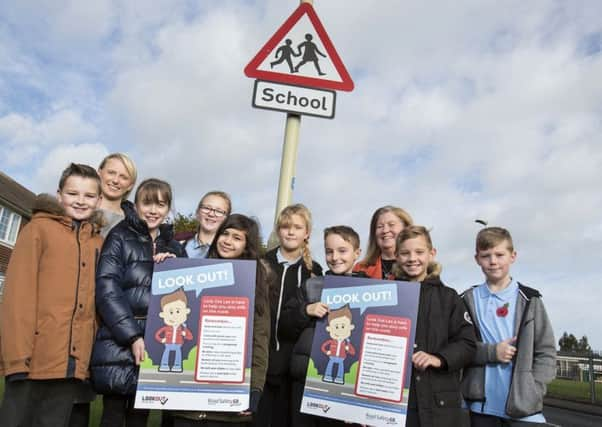Keeping children safe on the roads


Road Safety GB North East highlights that in the winter, children typically account for a third of all pedestrian road casualties.
The group has enlisted the support of a new mascot, Look Out Leo, to help educate young people about dangers.
Advertisement
Hide AdAdvertisement
Hide AdSchools can go to the RSGB NE website to download materials to display on walls and for children to take home, which gives advice about staying safe as pedestrians, cyclists and car passengers.
RSGB NE is appealing for all road-users to slow down and to look out for each other, particularly during poor weather conditions and when the light fades.
Parents and teachers are urged to encourage children to use pedestrian crossings wherever possible, not to take chances near roads, and to wear bright or reflective clothing in order to be seen. If children are travelling in vehicles, they must be fastened securely into the most appropriate seat.
Meanwhile, drivers are urged to cut their speed around schools, playgrounds and shopping centres, to always park in a safe area, and to be prepared for youngsters dashing out.
Advertisement
Hide AdAdvertisement
Hide AdPaul Watson, chairman of Road Safety GB North East, said boys aged 11 and 12 were the most vulnerable group of child pedestrian casualties. He said 78 per cent of children that are knocked down on the region’s roads were simply not looking.
He said: “As a region, we are doing better at keeping children safe on the roads, but there is still room for improvement.
“A large proportion of children that are knocked over are trying to cross the road away from a pedestrian crossing and more than a quarter are hit by vehicles while they are crossing near to parked cars. Those collisions could easily be avoided with more thought about road safety.
“What surprises me is that four per cent of children who were injured whilst travelling in vehicles were not wearing seatbelts. That is a higher rate than the number of adults who were not wearing seatbelts. That should never happen. All drivers are responsible for ensuring children in their car are properly strapped in before setting off. It could save a life.”
Between 2012 and 2016, there were 438 children, aged up to 16, injured in road collisions in Northumberland. Fortunately, none were killed, but 47 were seriously injured.